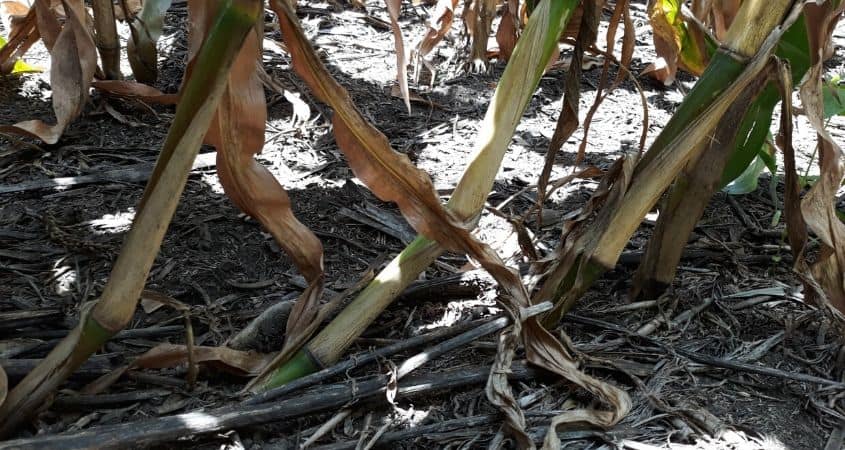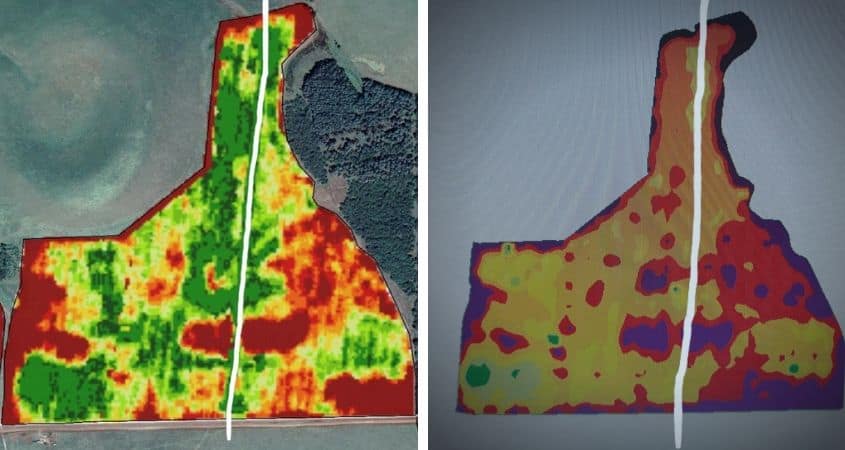
Lodging in cereals is the bending over of the stems near ground level of grain crops. Lodging makes cereal crops very difficult to harvest and can dramatically reduce yield.
Lodging in cereals is often caused by inadequate standing power of the crop and other external conditions such a storm damage, soil density, disease, sowing date, overpopulation and seed type.
Lodging affects crops such as maize, wheat, rice and other cereals. Reducing lodging in cereal crops is a major goal of agricultural research. As crop varieties and techniques have improved, we are encountering the inevitable problem lodging in farms. This is indeed a good problem to have, but nonetheless it is still a problem which needs to be addressed.

The risk of the crop falling over can however be reduced and almost eliminated by taking sensible steps and planning ahead at the beginning of the season.
It is also worth noting that lodging is worse in cloudier, overcast conditions where gibberellin activity it greatest and internode elongation is greatest. This certainly puts 2019 into context.
1. Seed rates. For fertile areas of the field, cut seed rates to 80 seeds/m2 (40kg/ha) for barley and 100 seeds/m2 (50kg/ha) in wheat. The major plus side of this is that you not only save money on seed but this is the most important step you can take to reduce the chances of lodging. The downside is that this is harder to do in practice without variable seed rates, and establishment needs to be really good at these low seed rates to avoid gaps.
2. Seed depth. Aim for 25 to 35mm. Planting too shallow or too deep can compromise crown root development.

3. Nitrogen. Areas that tend to fall over also tend not to respond to topdressing in my experience, so there is a double saving here of greater yield from more crop picked up and less money spent on fertilizer. This allows great savings to be made, but again needs either variable rate maps or a very good knowledge of the field and soil types. Send mid-season soil (top and sub soil), for in-season Nitrogen testing to allow you to make an informed decision as to whether an N top-dressing is required. This saves you on fertiliser costs, will reduce the chance of lodging from excess N, and the chance of lower yields from under application of N.
3. Drilling date. The earlier a crop is sown, in generally the more chance there is of heavy rain hitting it in the later stages of grain fill when it is at its most vulnerable. On the other hand, a crop sown in November or May will finish in a drier period when storms are less likely to know the crop over. This of course has to balanced against the risk of the crop running out of moisture.

4. Root diseases. The wider the rotation, the stronger the root system and better anchorage. This is an interesting dynamic because barley in rotation also tends to yield far better than continuous cereals, so the crop will however be heavier and still at risk!
5. Fungicides. Prothioconazole does a very good job of strengthening the straw in addition to its disease control.
6. Balanced nutrition. Potassium is a key nutrient which when lacking can lead to weaker stems, but in most soils in Kenya is adequately supplied. Balanced nutrition is key so address Nitrogen, Sulphur, Magnesium, Copper and possibly Boron. Ultimately this has the double benefit of greater yields and disease resistance too. Know your soils, test your soils and get a proper fertiliser program from CropNuts, that takes into account the nutrient levels in your soil and the yield-based nutrient requirements for the crop.
Till next time,
happy farming!
David

David Jones is the Broad Acre Specialist at Crop Nutrition Laboratory Services Ltd. (CROPNUTS). David has a keen interest in soils and no till farming systems where he has undertaken work looking into weed levels and changes in soil structure, and has extensive experience in field trials and in the development of precision farming techniques. In his spare time he enjoys playing rugby.
Order our services and get to know how to improve your soil for better yeilds.